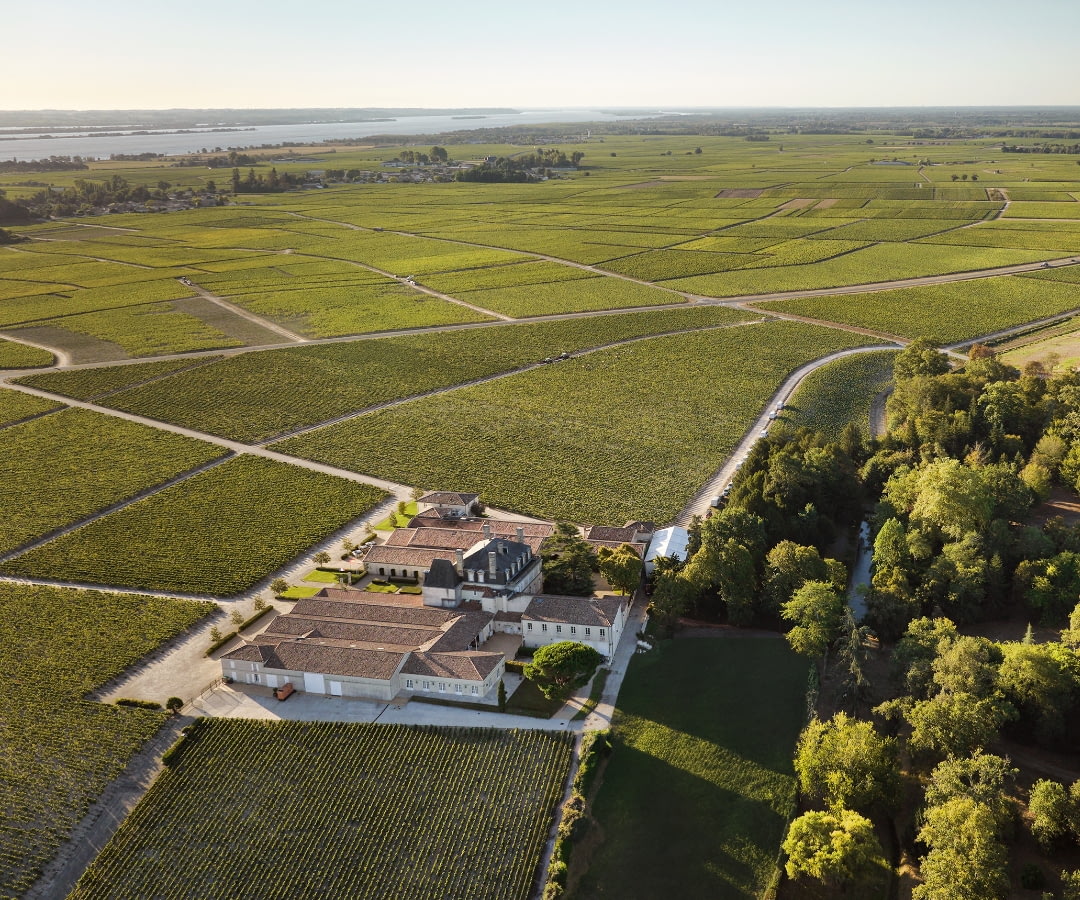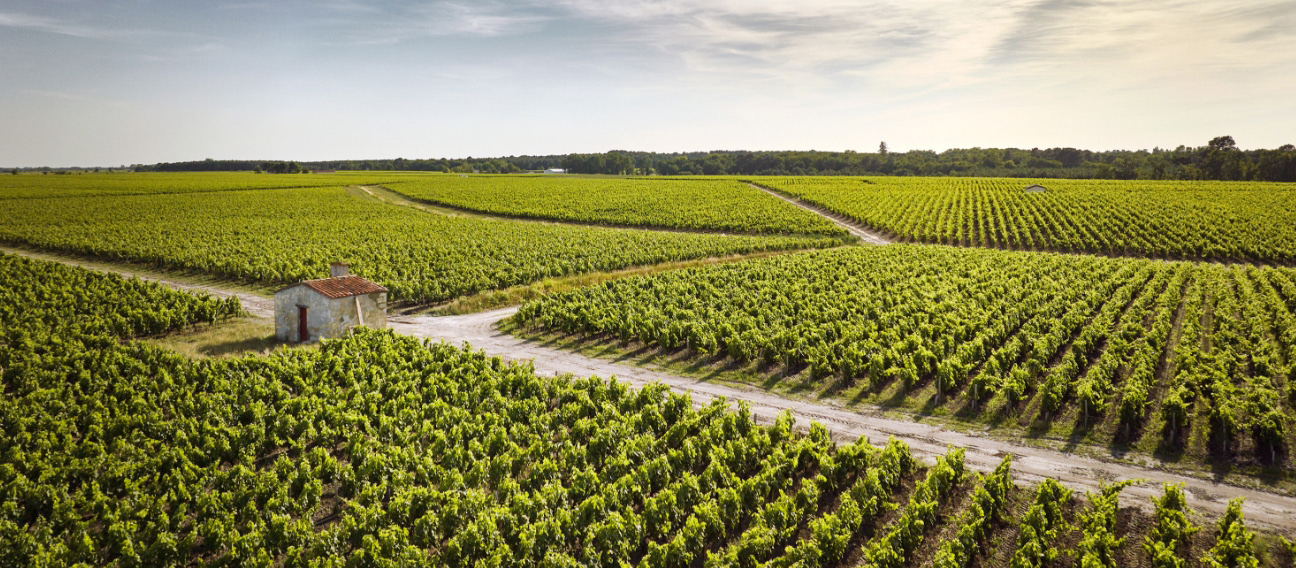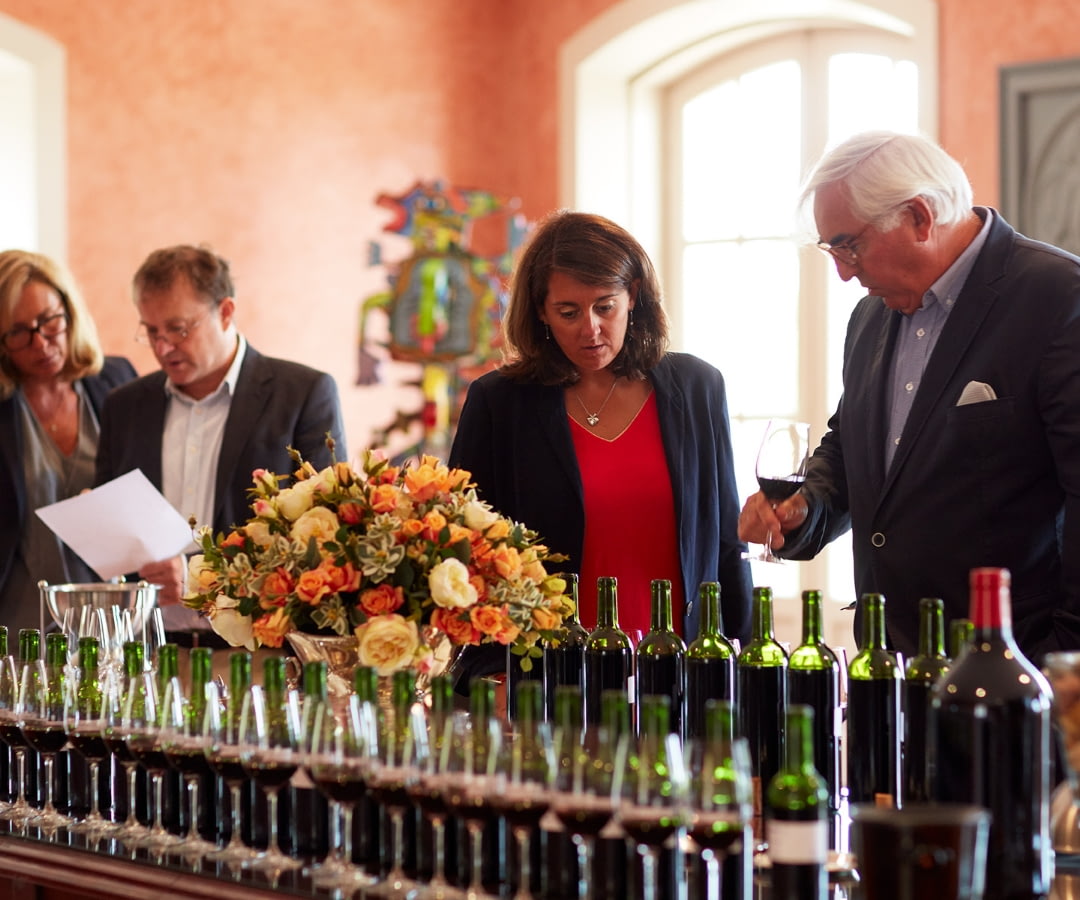
Grand-Puy-Lacoste
was a “sleeping beauty”

The property 2 / A vibrant Château
In harmony with the rhythm of each of its residents, the edifice at the centre of the "Grand-Puy" terroir has frequently undergone transformations over the centuries.
While the echoes of this storied past continue to resonate within the walls of the Château today, it is firmly anchored in the present day. It remains vibrant with the ups and downs of the vine, the events of the Borie family, and the hospitable reception of its guests. François-Xavier and Marie-Hélène, the current inhabitants, are the guardians of this lifestyle which has become increasingly rare in the Médoc. It comes alive with the cycle of the vine, the events of the Borie family and the warm welcome of its visitors.
A vibrant Château

The Château through the centuries
1737
The very first structure was erected on the "Grand-Puy" domain, as evidenced by historical records and certain architectural elements.
1855
The Château assumed its present form under the guidance of its owner, Pierre-Frédéric Lacoste. He made a deliberate choice to use slate from Touraine, a material more esteemed than the commonly used tile at that time. Pierre-Frédéric and his successors lived in the residence until 1926, when the Lacoste family was forced to sell it.
1932
Raymond Dupin, the new proprietor of the domain, primarily resided in Bordeaux. The Château entered a phase of decline during this period.
1979
When François-Xavier Borie and his wife Marie-Hélène moved in, they confronted a significant restoration project as the building was in a dilapidated condition. Marie-Hélène assumed responsibility for the interior design, infusing it with an elegant and warm style.


A beautiful renaissance
Now completely restored, the Château has regained its former splendour while incorporating a subtle touch of modernity. By enhancing its surroundings, François-Xavier and Marie-Hélène Borie have successfully recreated a harmonious and tranquil environment, ideal for strolling around.
The residence's classic French-style architecture blends the luminosity of Bordeaux stone with the rich grey tones of its refined, Renaissance-inspired slate roof. The modest façade is adorned on the right by a singular square tower, introducing an original and graceful asymmetry. Inside this tower lies the chapel where François-Xavier and Marie-Hélène baptised three children and three of their grandchildren - the future generation of the domain.
Currently, the Château serves as a showcase for wine tasting, warmly welcoming customers and wine enthusiasts from across the globe to unite in their shared passion for wine.















